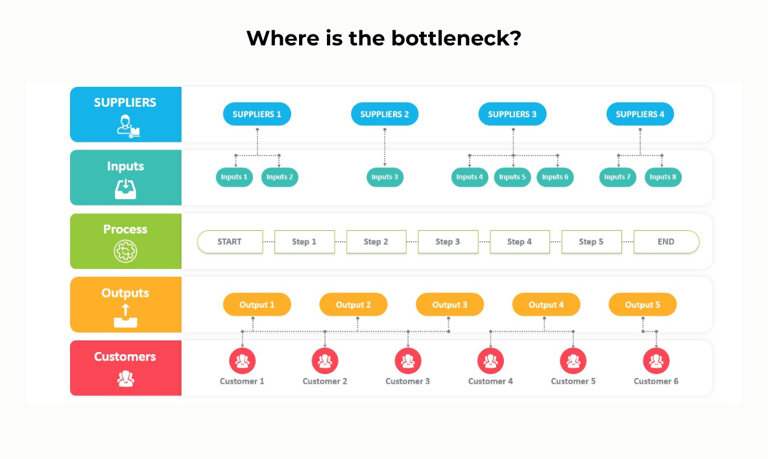How to Spot Hidden Bottlenecks in Your Business Processes?
OPERATIONAL EXCELLENCE


Some inefficiencies in business processes are obvious, but many others hide in plain sight—silently slowing down progress, frustrating teams, and eating into resources. These hidden bottlenecks often go unnoticed until they snowball into bigger issues. The good news? With the right mindset and tools, you can uncover and address them effectively.
In any business, processes are the gears that keep the machine running. When they work smoothly, you save time, resources, and energy. But when inefficiencies creep in—especially hidden ones—they can grind everything to a halt.
Here are some common signs of hidden bottlenecks:
Unnecessary Approvals: If processes frequently require approvals that rarely lead to changes, it’s worth questioning their necessity.
Back-and-Forth Communications: Constant clarifications between teams indicate misaligned workflows or unclear roles.
Delays at Hand-Off Points: When tasks move from one team or system to another, these transitions often become choke points.
Repetitive Rework: If your team spends too much time correcting errors, it’s a sign that something upstream is broken.
How to Identify Bottlenecks:
Start by observing your processes closely. Ask yourself:
Where do tasks slow down the most?
Are there recurring delays or miscommunications?
Do teams or systems struggle to complete tasks due to unclear instructions or dependencies?
Mapping out your processes visually can help pinpoint these problem areas. A simple flowchart or SIPOC diagram can bring clarity to hidden inefficiencies.
Identifying bottlenecks is just the beginning. Once you know where the problems lie, you can start simplifying and optimizing—paving the way for smoother, more efficient workflows.
